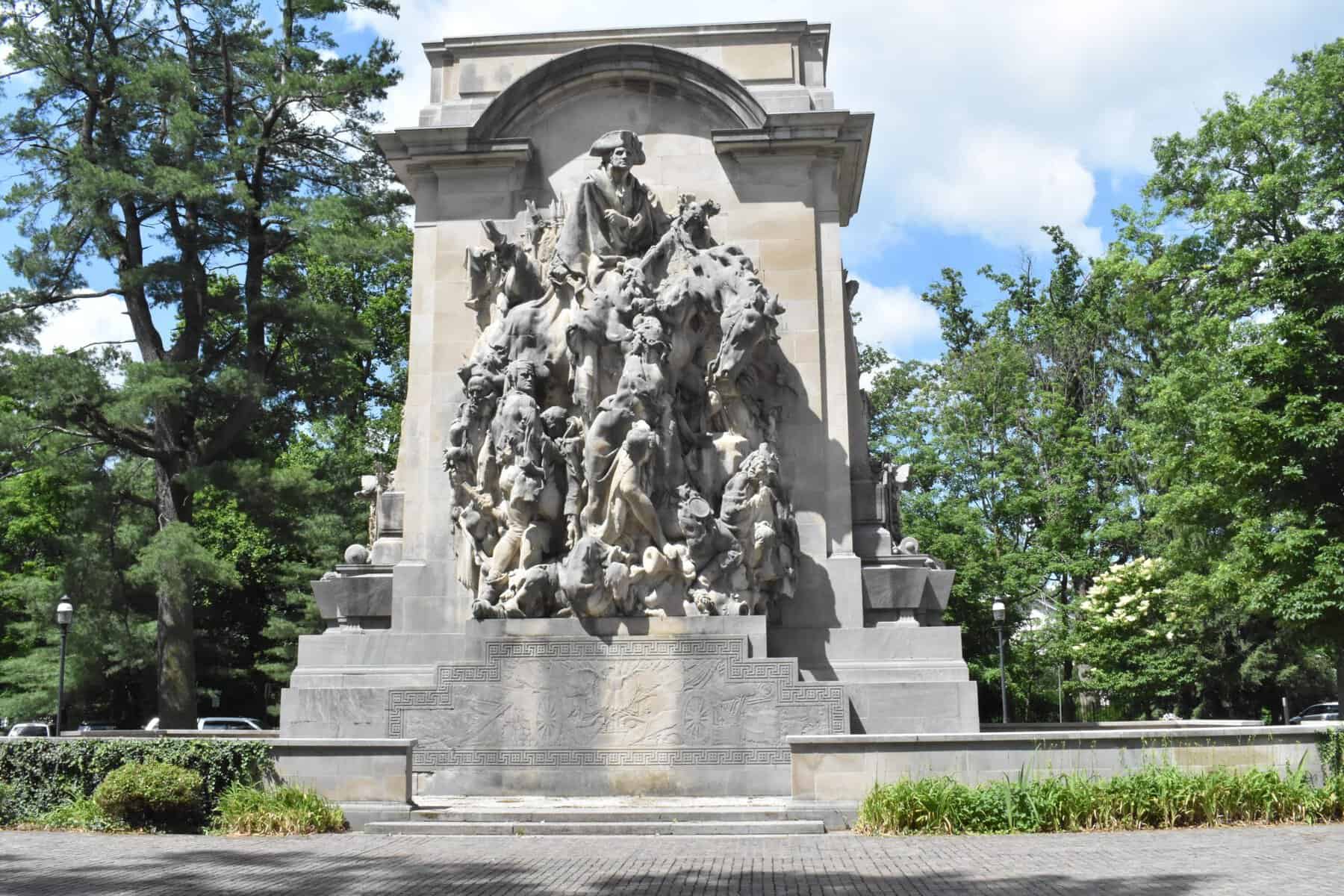A century ago, the Princeton Battle Monument was completed and today it continues to stand 50-feet tall in Princeton.
On June 9, 1922, the monument was unveiled and dedicated in Princeton with dignitaries in attendance that included President Warren G. Harding, the 29th U.S. president, representatives from the U.S. Senate and House of Representatives, and Princeton Mayor Charles Brown.
“Since its dedication, the monument has served as a reminder of the virtues central to our national identity,” said Rosemary Kelley, regent of the Princeton Chapter of the Daughters of the American Revolution. “To us it serves as a living example of a community coming together to honor our heroes and the history that took place in this small town.”
A large American flag covered the monument at the 1922 dedication and there was a 21-gun salute and military honor guard. The monument commemorates the Battle of Princeton, which occurred on Jan. 3, 1777.
Remarks by Gov. Phil Murphy read by proxy stated, “The Battle of Princeton was a clash between Hugh Mercer of the Continental Army and British troops commanded by Col. Charles Mawhood under the leadership of Lord Cornwallis. The battle resulted in a retreat from the British and contributed to reinforcing the patriot cause and increased Continental Army enlistment. In 1922, the monument was completed and erected with an official commemoration by President Warren G. Harding.”
Murphy further stated, “I offer my sincere congratulations on this milestone.”
One hundred years to the day of its dedication, the Morven Museum & Garden, the Historical Society of Princeton and state and municipal officials held a commemoration of the dedication on June 9.
The Historical Society of Princeton partnered with Morven in hosting the commemoration.
“It is our belief that history is an anchor to the past and beacon to the future. Helen and Bayard Stockton were a driving force in the creation and placement of the monument that celebrates a time nearly 150 years before them,” said Jill Barry, executive director of Morven Museum & Garden. “Today, we continue the conversation some 100 years later and perhaps a 100 years from now another group will gather to keep the conversation going.”
The monument stands in front of Monument Hall in Princeton. The limestone monument is 50-feet tall and depicts Gen. George Washington leading his troops.
“In the daylight, we are able to see all of the facets and details that [Beaux Arts] sculptor Frederick MacMonnies wanted us to see,” said Mike Russell, president of the Princeton Battlefield Society. “Looking at the centerpiece of the monument, an observer may become gripped with George Washington’s tired, but resolute and distant gaze as he leads his men not only through the struggle of the battle taking place, but onward towards to the next objective in securing complete independence for a fledging United States.”
The 1777 battle culminated with American troops led by Washington defeating a force of British soldiers, which helped the Continental Army gain momentum.
“Perhaps the observer would perceive that each figure on the monument seamlessly blend into one another,” Russell said. “Demonstrating how each one, though singular, works collectively to make up the entire imagery of the piece, much as the new states were coming together to form on nation.”
The Princeton Battle Monument was commissioned in 1908 and completed and unveiled in 1922.
Remarks by Roger Williams, president of the Princeton Chapter of the Sons of the American Revolution, read by Russell stated, “In 1887, a local committee was established to reestablish our sense of nationhood in this town. For 20 years, the project languished. Mostly due to extended fundraising efforts. By 1907, enough funds had been collected to hire sculptor Frederick MacMonnies.”
Williams added that fundraising during World War I further stalled the project.
“Local residents would eventually contribute $135,000 and the state of New Jersey and the federal government would contribute $60,000. Work would begin in March of 1919,” he said.
The commemoration ceremony concluded with a 21-gun salute.
During the commemoration, visitors of the museum were able to see a large 48-star American flag, which is 10 feet by 19 feet, that was on loan from the Historical Society of Princeton in Morven’s Stockton Education Center.
Also on view was a historic slideshow about how the monument came to be, as well as special ephemera provided by the historical society.
Morven Museum & Garden located at 55 Stockton St in Princeton is open Wednesday
through Sunday from 10:00 a.m. to 4:00 p.m.
For more information about Morven, visit www.morven.org.

